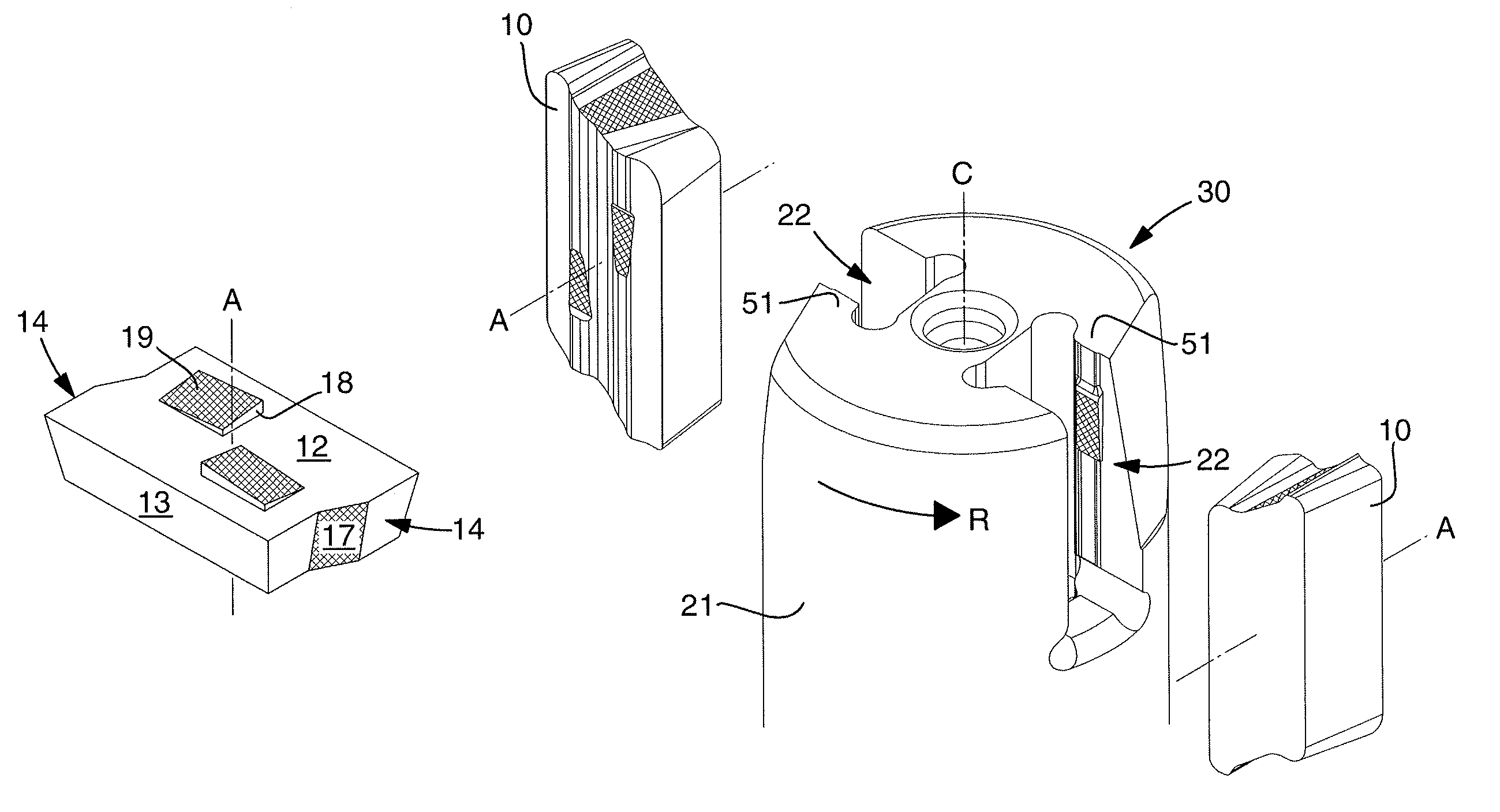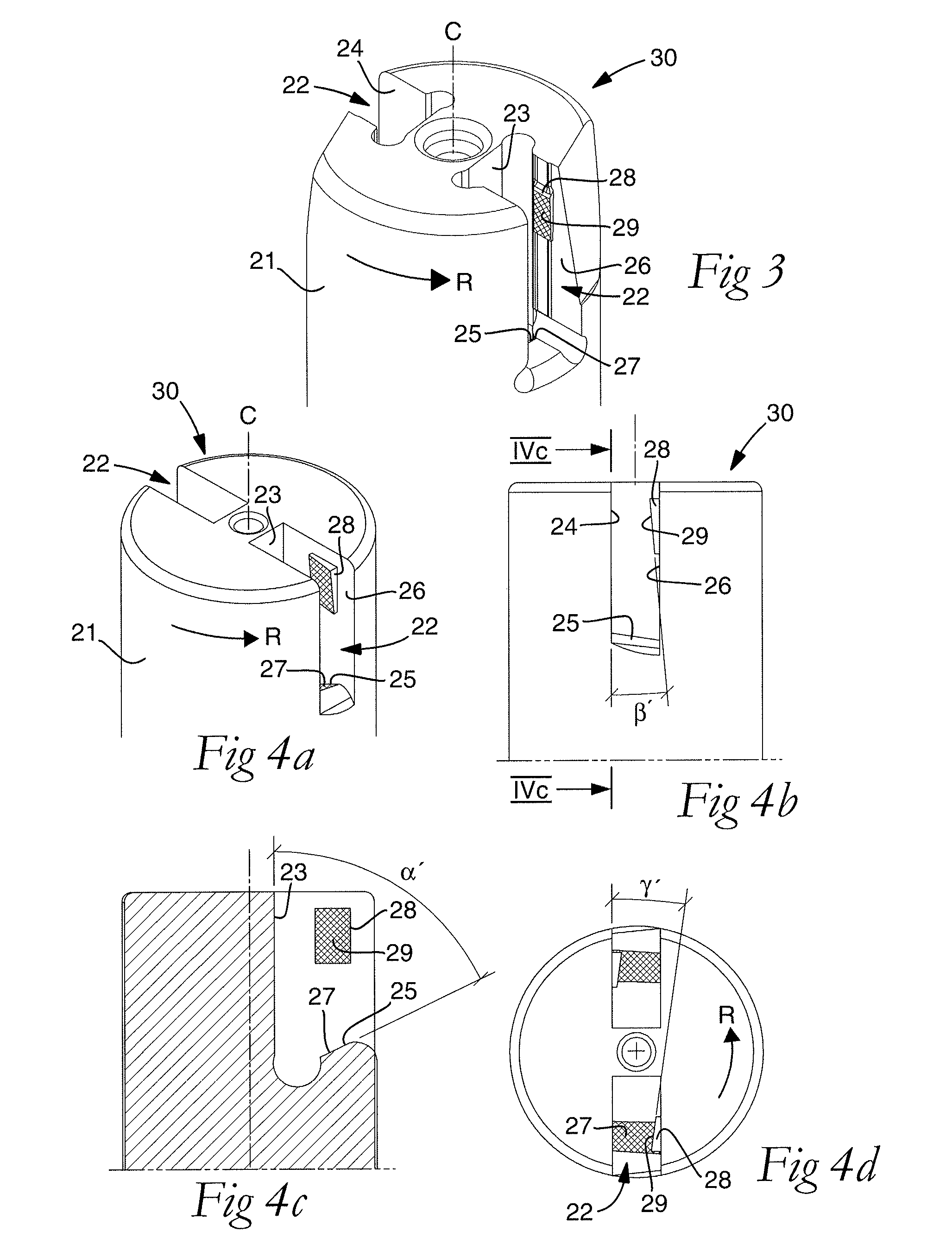Indexable milling insert for milling tools
a technology of inserts and milling tools, applied in the direction of shaping cutters, manufacturing tools, transportation and packaging, etc., can solve the problems of inability to efficiently and precisely machine materials, high cost of regrinding, and inability to use milling cutters, etc., and achieve good means of ramping operations
- Summary
- Abstract
- Description
- Claims
- Application Information
AI Technical Summary
Benefits of technology
Problems solved by technology
Method used
Image
Examples
Embodiment Construction
[0038]A design of the milling insert 10 according to an embodiment of the invention is shown in FIGS. 1a,b. The milling insert 10 includes a bottom surface 11 and an opposite chip surface 12 between which side surfaces extend. Two of the side surfaces are primary clearance surfaces 13 and two of the side surfaces are secondary clearance surfaces 14. The milling insert 10 has a plurality of cutting edges 15 formed between the chip surface 12 and the clearance surfaces 13, 14. Each one of the cutting edges 15 preferably includes a chip removing main cutting edge 16 and a surface-wiping minor cutting edge, e.g. a wiper edge adjacent to one of the corners. The main cutting edges 16 connect to the primary clearance surfaces 13 and are primarily parallel. However, the main cutting edges 16 do not necessarily need to be parallel in their entire length, but smaller deviations from the parallel design may occur. As seen from above, toward the chip surface 12, and as seen from below, toward t...
PUM
| Property | Measurement | Unit |
|---|---|---|
| angle | aaaaa | aaaaa |
| angle | aaaaa | aaaaa |
| angle | aaaaa | aaaaa |
Abstract
Description
Claims
Application Information
 Login to View More
Login to View More - R&D
- Intellectual Property
- Life Sciences
- Materials
- Tech Scout
- Unparalleled Data Quality
- Higher Quality Content
- 60% Fewer Hallucinations
Browse by: Latest US Patents, China's latest patents, Technical Efficacy Thesaurus, Application Domain, Technology Topic, Popular Technical Reports.
© 2025 PatSnap. All rights reserved.Legal|Privacy policy|Modern Slavery Act Transparency Statement|Sitemap|About US| Contact US: help@patsnap.com



